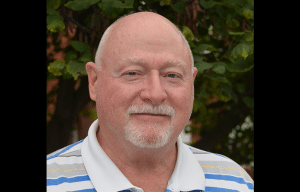Storm chasers, life savers | Planet Ryan
On Friday, May 31, the meteorological community lost three of its most innovative, valuable members to the EF-5 tornado that struck El Reno, Okla. This loss is tragic, yet honorable, and my goal is to tell you why.
The news broke Sunday and was confirmed by CNN that Tim Samaras, Paul Samaras (Tim’s son) and longtime partner and team member Carl Young were tragically killed while tracking closely to a powerful tornado in El Reno. This shocking news hit the storm chaser and meteorological community hard for many reasons, but the first one being that Tim Samaras, a leader in the field of storm chasing, was without a doubt the most safety conscious and by-the-book chaser on the roads. He knew when to get close, and when to back off and try again another day. This goes to show even the most experienced person in any field can be taken by surprise on any given day.
The reason I’m writing about Tim Samaras and his crew today is because I want to make the readers aware of why his work was so important, and just how valuable he was. He should receive every heroic medal available because I can guarantee he’s saved more lives than most ever have in this country and around the world.
You see, when the general public hears about storm chasers, they think it’s a bunch of guys who go out and chase storms and tornadoes strictly for the thrill of it – kind of like bungee jumpers or cliff divers or any other extreme hobby. While it’s true there are hundreds of amateur storm chasers doing this, there are guys like Tim Samaras whose sole purpose is to get close to violent tornadoes to deploy sophisticated, highly technological probes and instruments into them in order to retrieve invaluable data that has directly resulted in literally countless lives saved across the U.S. and other parts of the world.
Back in the early 20th century and years before that, it wasn’t uncommon for a tornado to kill hundreds, sometimes thousands, of people because the only warning they had was maybe a couple of seconds before it actually hit. Since then, we still unfortunately have deaths after large tornadic storms. However, the number is significantly lower these days, as the average warning time before a tornado strikes your area is about 15 minutes. This is directly tied to the efforts of Tim Samaras and his crew, gathering once unknown data about the mysteries of tornado development.
For example, the Moore, Okla., tornado event that we’re still talking about had an astonishing 36 minutes of warning lead-time. Can you imagine if there were only a few minutes or less? In that case, the powerful, EF-5 tornado would have killed thousands with ease. Because of men like Tim Samaras, even the biggest and most violent tornadoes Mother Nature can throw at us can be avoided and precautions can be taken to mitigate the loss of lives on a large scale.
Tim Samaras founded TWISTEX (Tactical Weather Instrumented Sampling in Tornadoes Experiment) for the purpose of learning more about tornado development and increasing warning lead-times. His contributions are priceless and will never be forgotten. His data will be studied for the next century by leading scientists.
Tim, his son Paul, and their partner, Carl, did not die in vain. They died in battle, with their only goal being to protect you from future devastation. May they rest in peace.





